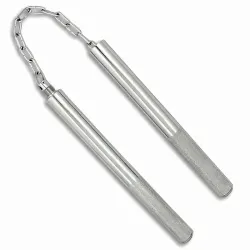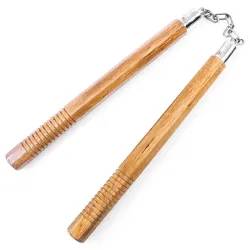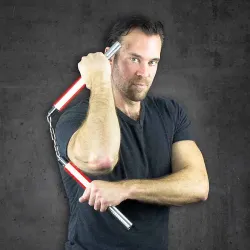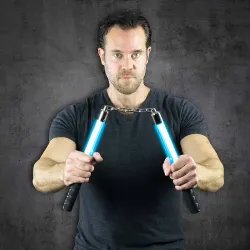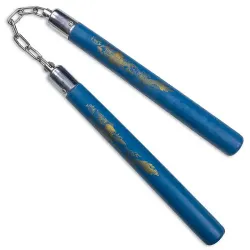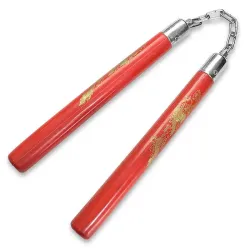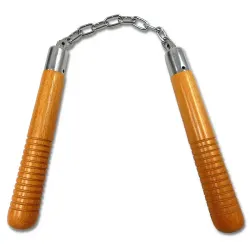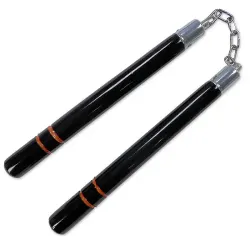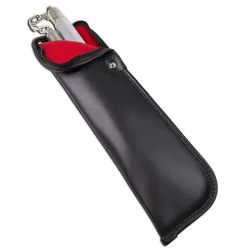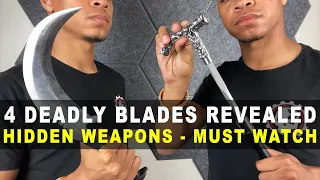Nunchaku - Foam, Metal & Wooden Nunchucks
-
$23.95
-
$22.95
-
$34.95
-
From $14.95
-
$24.95
-
$14.95
-
$14.95
-
$22.95
-
$14.95
-
$22.95
-
$139.95
-
$69.95
-
$69.95
-
From $14.95
The roots of the nunchaku go way back to Okinawa, Japan, where they were originally used in traditional martial arts like Okinawan Kobudo. There's debate about how they were first created. Some say they evolved from a farming flail used for threshing rice, while others argue they may have been adapted from horse bridles. Either way, what started as a simple tool quickly became a weapon that required precision, coordination, and serious skill. Over time, nunchaku worked their way into disciplines like karate, taekwondo, and modern freestyle martial arts, and today they're used for everything from kata forms and demos to hardcore striking drills.
Of course, no conversation about nunchaku is complete without mentioning Bruce Lee. His fluid movements and unreal speed in movies like Enter the Dragon basically launched nunchucks into pop culture history. But even though Bruce made them look like toys, real nunchucks demand respect. They're used for fast strikes, blocks, joint locks, and even disarming an opponent. Once you've learned how to control them, they feel like an extension of your own arms.
At KarateMart.com, we carry a wide selection of martial arts nunchaku to match your training level and style. Whether you're just getting started and need something forgiving, or you're an experienced practitioner looking for the real deal, we've got you covered. Our selection includes foam nunchucks for safe practice sessions, durable plastic or rubber nunchaku for intermediate users, and real nunchaku made from wood or metal for serious training and display. For those looking for traditional wooden nunchucks, we offer handcrafted hardwood options with smooth finishes and balanced construction. Wood nunchucks are still favored by many traditional martial artists because they strike a perfect balance between control and power.
If you're looking for something with a bit more bite, check out our real nunchucks made from metal or composite materials. These are no joke. They're built for advanced users who know how to handle the speed and impact that comes with heavier weapons. Whether you're perfecting freestyle moves or putting together a tournament-ready routine, these are the best nunchucks for precision control and serious impact. We also carry chained and corded versions, so you can choose the setup that best matches your style and preference.
If you're browsing nunchucks for sale, don't settle for cheap plastic junk or novelty pieces that fall apart after one swing. We stock only real martial arts nunchucks that are made to perform. Whether you need wooden nunchaku for kata, flashy nunchucks for demos, or a solid pair to train with at home, you'll find gear here that's built to last. Every set is selected for quality, balance, and durability, so you can train hard without worrying about your equipment falling short.
It's worth mentioning that in some areas, nunchaku are restricted or even illegal to carry in public. So if you're looking for nunchaku for sale, make sure you check your local laws before ordering. They're legal to own and train with in most states, especially when used responsibly at a dojo or in your own home. Just like with any weapon, responsible use is key.
Beyond traditional training, nunchaku have carved out a spot in modern martial arts culture. Freestyle tricking and flow arts communities have embraced them for their visual flair and fluid movement. You've probably seen performers flipping nunchaku under their legs, behind their backs, and into mid-air catches that look more like dance than combat. And thanks to social media, there's no shortage of incredible nunchuck performances out there to get inspired by.
One wild story that made headlines a few years ago involved a man in the U.S. who defended himself during a home invasion using a pair of real nunchaku. According to reports, he had been practicing with martial arts nunchaku for years and used them to disable one of the intruders before police arrived. It's not every day that you see a real-world self-defense situation where nunchucks come into play, but it just goes to show that with enough practice, these weapons are more than just showpieces. They're functional tools for defense.
We've also seen a rise in collectors and historical martial arts enthusiasts searching for authentic wooden nunchaku to display or pass down. The craftsmanship on some of these traditional wood weapons is incredible. If that's more your style, we offer wooden nunchaku made from red oak, white wax wood, and other high-quality materials that showcase the weapon's origins while still being functional for training.
Finding the best nunchucks really comes down to your training goals and experience level. Some people stick with foam nunchaku while building coordination and control, while others prefer real nunchucks made of wood or metal once they've built up their skill. There are also martial arts nunchaku designed specifically for freestyle movement, demos, or traditional kata, depending on how you train.
Whether you're into hardcore practice with wooden nunchucks, working through martial arts forms, or just picking up a set of numchucks to explore some new skills, there's a version of this weapon that fits your style. Nunchaku have stayed relevant for a reason; they're fast, challenging, and endlessly adaptable. From solo training in your garage to formal drills in the dojo, they continue to be one of the most iconic tools in martial arts.
What are numchucks? Is that the same thing?
Yes, "numchucks" is a common misspelling of "nunchucks," which itself is the slang term for the traditional weapon "nunchaku." While numchucks isn't technically correct, it's widely used online and often refers to the same thing. So whether you call them nunchucks, nunchaku, or numchucks, you're talking about the same two-stick weapon connected by a chain or cord.
Can nunchucks be used for self-defense?
Technically yes, but they're not the most practical self-defense weapon for most people. Nunchaku require skill, space, and timing to use effectively under pressure. That said, in the hands of someone well-trained, they can be used to strike, disarm, or intimidate an attacker. There are also legal considerations. Carrying nunchucks in public, even for self-defense, may be restricted in some areas. They're better suited for training, demonstration, and sport rather than day-to-day defense.
Are nunchucks legal in my state?
Nunchuck laws vary widely depending on where you live. In many U.S. states, they're completely legal to own and practice with in your home or at a martial arts school. However, some states may have restrictions on possession, use, or carrying them in public. Always check your local laws before purchasing or transporting nunchucks, just to stay safe and compliant.
What's the Best Type of Nunchaku for Beginners?
The best type of nunchaku for beginners is a foam-padded pair connected with a nylon cord instead of a metal chain. Foam nunchaku help new users develop coordination and technique without worrying about injuries during early practice. The soft padding absorbs impact, while the cord allows for smoother spins and more forgiving rebounds when mistakes happen.
Once a beginner feels comfortable handling foam nunchaku, the next step is to transition to wooden or metal versions. Wooden nunchaku provide a more realistic feel and proper weight distribution, while metal ones are designed mostly for advanced practitioners or demonstrations. Starting with foam gives you the confidence and muscle memory to move up safely as your skills progress.
Can Kids Learn to Use Nunchaku?
Yes, kids can safely learn to use nunchaku under proper supervision. The key is to start with foam-padded nunchaku designed specifically for children. Foam provides enough weight for learning basic movements while minimizing the risk of injury. Training should focus on control, coordination, and focus rather than power or speed.
Many martial arts schools offer beginner-friendly nunchaku classes for kids, emphasizing safety and discipline. Instructors typically teach basic strikes, figure-eight patterns, and handling techniques before moving to more advanced skills. With consistent practice and guidance, kids can build confidence and dexterity while having fun with this classic martial arts weapon.
What's the Correct Way to Hold Nunchaku?
The correct way to hold nunchaku is by gripping one stick near the top of the handle, about an inch or two below the cord or chain. This grip provides maximum control and allows for smooth spins, quick rebounds, and strong strikes. Holding too close to the middle can make the weapon harder to control, while gripping too close to the cord can limit range and power.
Your thumb and index finger should form a relaxed pinch while the other fingers wrap loosely around the handle. The key is to maintain a flexible grip, tight enough to prevent the nunchaku from slipping but loose enough to let it rotate freely during transitions. Proper hand placement is the foundation for learning spins, blocks, and striking techniques safely and efficiently.
What Materials Are Nunchaku Made From?
Traditional nunchaku are made from hardwoods like oak, hickory, or maple, which provide the right balance of weight and durability for martial arts training. Wooden nunchaku are preferred by experienced practitioners because they offer realistic handling and solid impact when striking padded targets.
Modern nunchaku, however, can be made from a wide variety of materials. Foam nunchaku are lightweight and designed for beginners, helping to prevent injuries during early practice. Metal or aluminum nunchaku are often used for demonstrations or display, while plastic and polymer versions are popular for casual training or cosplay. The material you choose depends on your skill level, training environment, and how you plan to use them.
What's the Difference Between Foam, Wood, and Metal Nunchaku?
Foam nunchaku are the safest option for beginners because they are lightweight and padded, reducing the chance of injury while learning control and coordination. The foam covering cushions mistakes, allowing new users to practice spins, passes, and figure-eight movements without worrying about painful impacts. These are typically connected by a nylon cord, which offers smoother motion and less rebound than metal chains, making them ideal for kids or first-time practitioners.
Wooden nunchaku are the most traditional type and provide a realistic sense of weight and momentum. They are often made from dense hardwoods such as oak, hickory, or maple, which allows for powerful strikes and authentic handling. Because of their rigidity and weight, wooden nunchaku help develop proper wrist strength and timing but should only be used once basic control is mastered. Many martial artists prefer wooden nunchaku for formal training or kata demonstrations since they closely resemble the classic Okinawan design.
Metal nunchaku are designed primarily for advanced users, performers, or collectors. They are typically made from aluminum or steel, which makes them heavier, faster, and far more dangerous if mishandled. Their reflective finish and durability make them popular in martial arts exhibitions and movies, but they are not ideal for regular training. Some practitioners use metal nunchaku specifically to build wrist and forearm strength, since their extra weight increases resistance. When you switch back to wooden or foam pairs after practicing with metal ones, your speed and control usually improve noticeably.
Choosing between foam, wood, and metal ultimately depends on your goals. Foam nunchaku are best for learning, wood provides traditional realism, and metal offers durability and strength training benefits. Many martial artists keep multiple pairs for different purposes, rotating between safety, performance, and practice.
What's Better, Chain or Cord-Connected Nunchaku?
Both chain and cord-connected nunchaku have their advantages, and the right choice depends on your skill level and training goals. Cord-connected nunchaku are generally smoother and quieter, making them ideal for beginners and traditional martial arts practice. The flexible nylon or cotton cord allows for faster spins and easier rebounds, giving users more control and a forgiving feel when learning passes and transitions.
Chain-connected nunchaku, on the other hand, are more durable and preferred by advanced practitioners. The metal links provide a slightly heavier connection and a different kind of momentum, which can make spins more powerful and strikes more stable. However, they also tend to rebound harder if you miss a catch, so they require better timing and technique. Chains can also create more noise during practice, which some people find satisfying while others find distracting.
In short, cord-connected nunchaku are best for beginners and those practicing traditional forms, while chain-connected versions are ideal for experienced users who value strength and durability. Many martial artists eventually own both types, switching between them depending on the training environment and purpose.
Are Wooden Nunchaku Better Than Foam Ones?
Wooden nunchaku are not necessarily better than foam ones; they are simply intended for a different level of training. Foam nunchaku are ideal for beginners because they reduce the risk of injury while you are still learning coordination and timing. The lightweight padding allows you to practice spins, strikes, and transitions safely without worrying about bruises or damage from mistakes.
Wooden nunchaku are heavier and provide a more realistic feel. They are better suited for intermediate and advanced users who already have solid control and want to improve power, accuracy, and traditional technique. The extra weight of wood helps strengthen your wrists and forearms, and it gives a more authentic experience that matches what is used in many traditional martial arts styles.
Most martial artists start with foam nunchaku and gradually move to wood as their control improves. Many keep both types on hand, using foam for freestyle or speed training and wooden pairs for more serious martial arts practice. The best choice depends on your experience level, comfort, and training goals.
What's the Benefit of Octagonal Nunchaku?
Octagonal nunchaku, sometimes called "eight-sided nunchaku," offer a unique grip and striking feel compared to round-handled versions. The flat edges of the octagonal design create small ridges that improve hand traction, making it easier to maintain control during spins and transitions. This added grip helps prevent slipping, especially when your hands get sweaty during longer practice sessions.
Another advantage of octagonal nunchaku is the way they transfer energy on impact. Because the edges make more focused contact than a smooth, round surface, each strike delivers slightly more concentrated force. Many martial artists appreciate this feature for training accuracy and developing cleaner, more precise strikes. The shape also gives you a better sense of handle alignment, allowing you to instantly feel where the flat sides are during movement.
While octagonal nunchaku are a great option for advanced users, they can be a bit uncomfortable for beginners who are still learning control. For that reason, most students start with round-handled nunchaku and later transition to octagonal ones once their grip and technique are consistent. Both styles have their place, and having one of each can help you adjust to different handling and performance goals.
Who Invented the Nunchaku?
The exact origin of the nunchaku is uncertain, but most historians trace it back to Okinawa, Japan, during the time when the island was under a weapons ban imposed by occupying forces. Farmers and villagers were forbidden to carry traditional weapons, so they adapted everyday tools for self-defense. It is widely believed that the nunchaku evolved from a farming implement used for threshing rice or soybeans, consisting of two wooden handles connected by a rope or cord.
While its precise inventor is unknown, the nunchaku became part of Okinawan kobudo, the island's traditional weapon-based martial arts. Over generations, the weapon was refined for combat and demonstration, with variations appearing in both Japanese and Chinese martial traditions. What began as a simple agricultural tool eventually became one of the most recognizable martial arts weapons in the world.
The nunchaku's popularity grew even further in the 20th century, thanks to martial artists and movie icons like Bruce Lee, who showcased its speed and versatility on screen. Today, it remains an essential training weapon in many dojos and is used worldwide for both self-defense and performance art.
What Was the Nunchaku Originally Used For?
The nunchaku is believed to have originated as a simple farming tool before it became a weapon. Most historians agree that it was used for threshing rice, soybeans, or other grains by separating the edible parts from their husks. The design of two wooden sticks connected by a cord made it easy to swing and strike harvested crops, which likely inspired its later adaptation for self-defense.
When Okinawan farmers were prohibited from carrying traditional weapons during foreign occupation, they repurposed everyday tools for protection. The nunchaku's compact size and quick striking ability made it an effective improvised weapon that could be easily concealed. Over time, it was refined through martial arts practice and incorporated into Okinawan kobudo as a formal training weapon.
Although its exact origin story varies by region, the nunchaku's evolution from farm implement to martial arts weapon shows how creativity and necessity shaped Okinawan combat traditions. What began as a practical tool for daily life became one of the most iconic weapons in martial arts history.





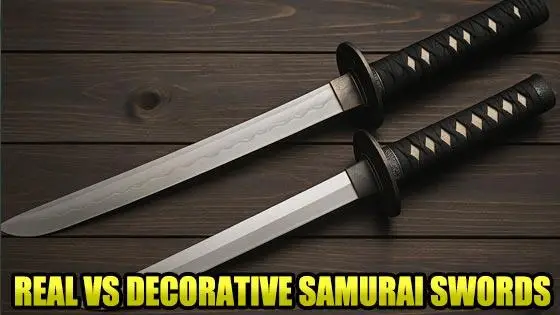
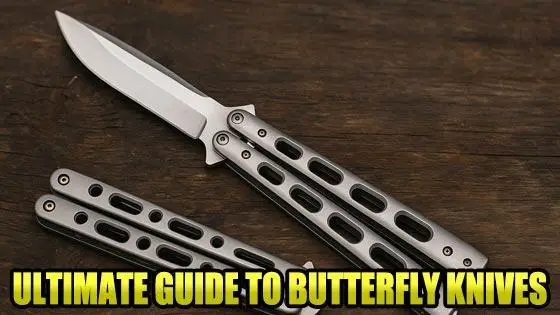
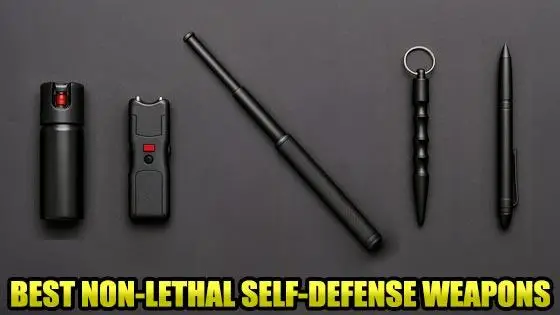
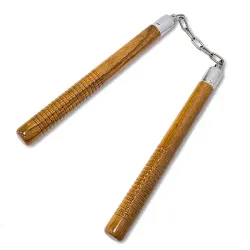
 (9)
(9)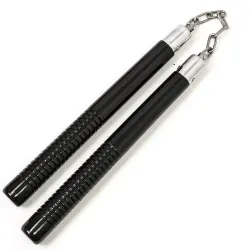
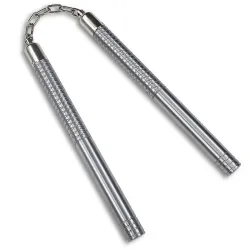

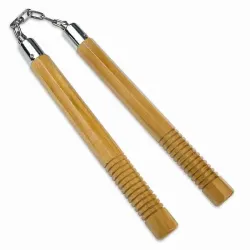

 (19)
(19)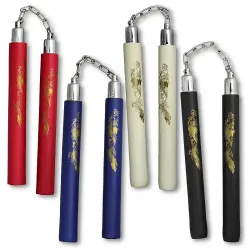

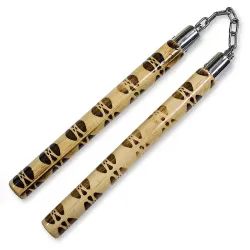
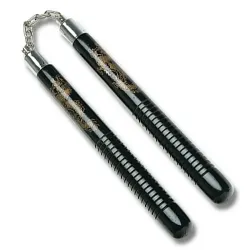
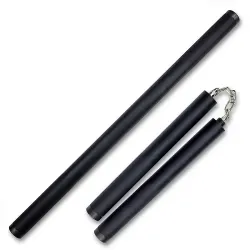
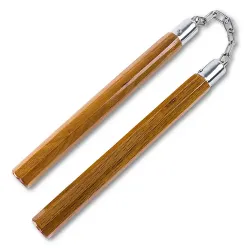
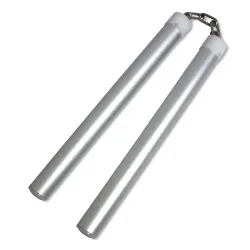
 (3)
(3)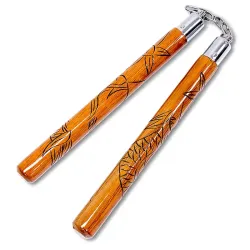
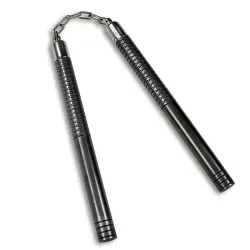

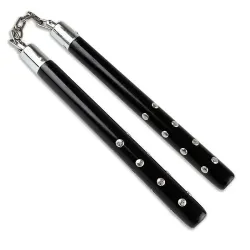
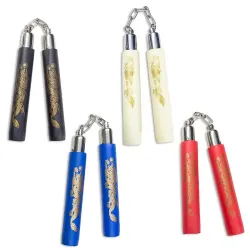
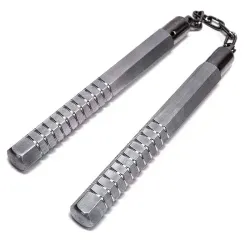
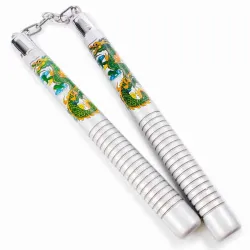
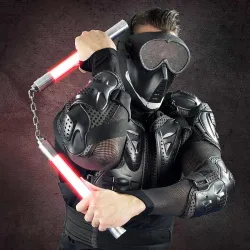
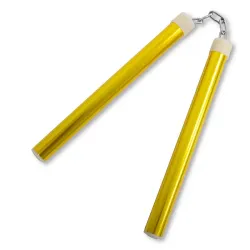
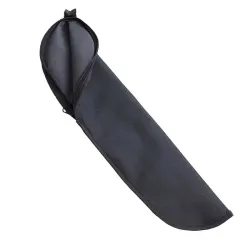
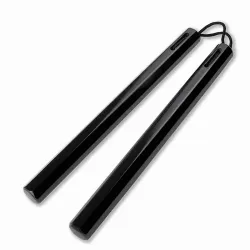
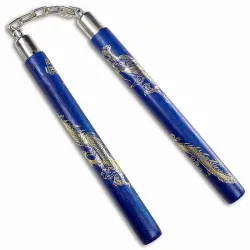

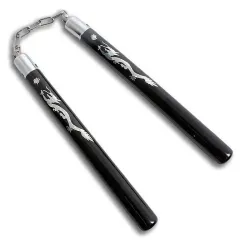
 (3)
(3)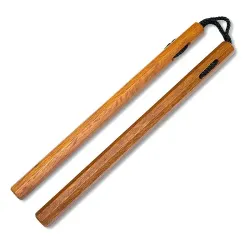
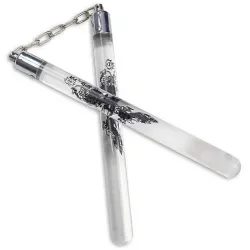
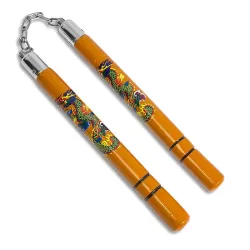
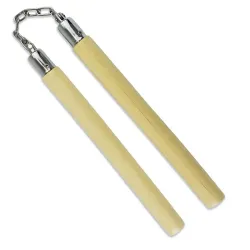
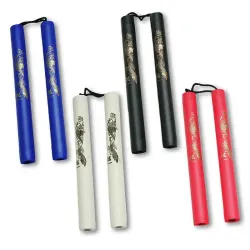
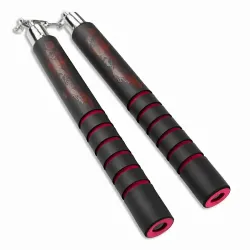
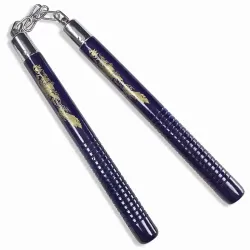
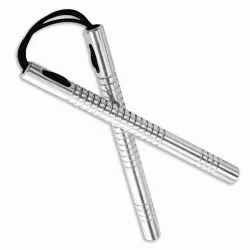
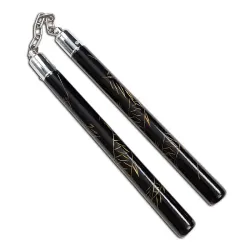
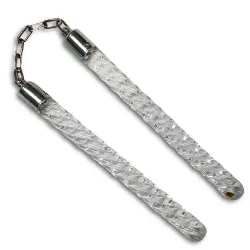

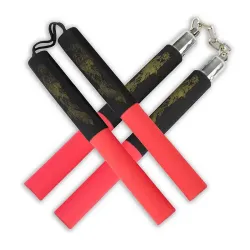
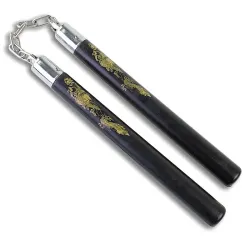
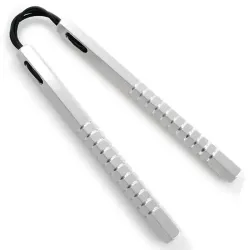
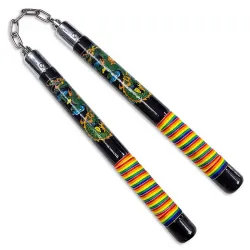
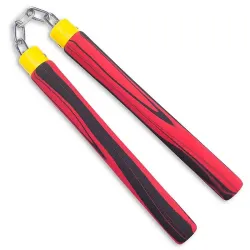
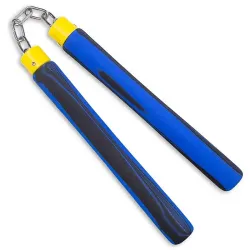
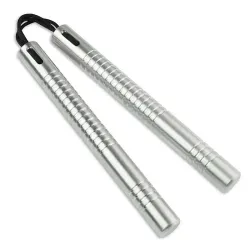
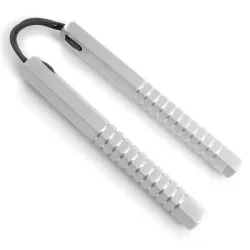
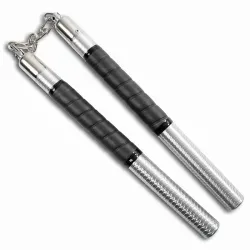
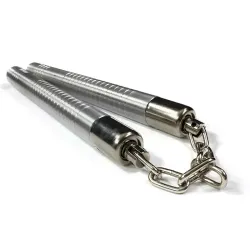



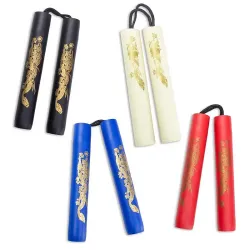
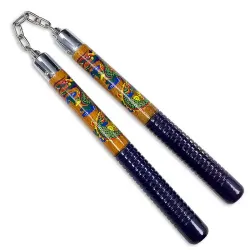
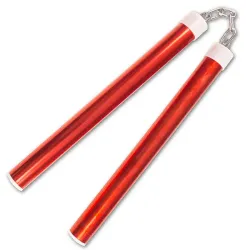
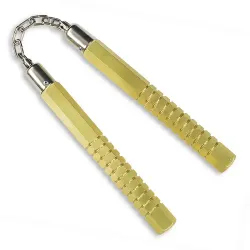


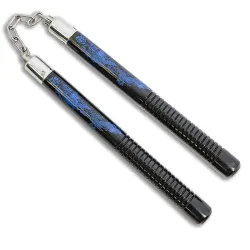
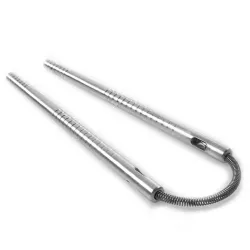
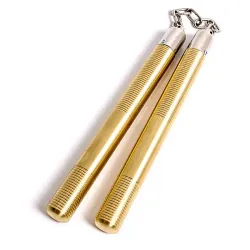
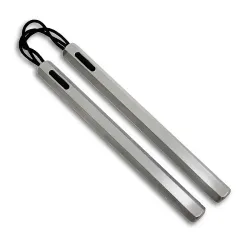
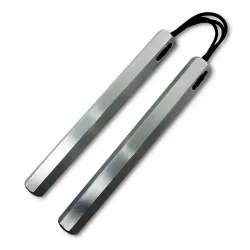
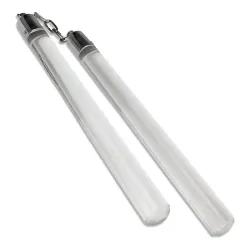
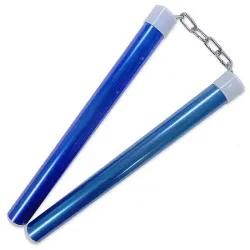

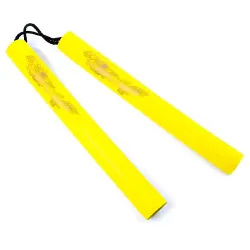
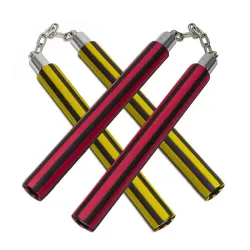
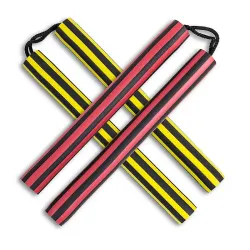
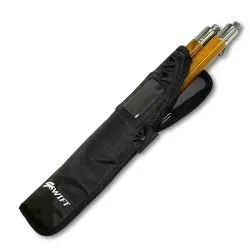
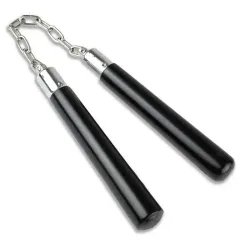
 (1)
(1)